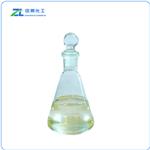- BETA-CARYOPHYLLENE
-

- $1.00 / 1kg
-
2025-04-23
- CAS:87-44-5
- Min. Order: 1kg
- Purity: 99%
- Supply Ability: 10 mt
- BETA-CARYOPHYLLENE
-

- $0.00 / 1KG
-
2025-04-15
- CAS:87-44-5
- Min. Order: 1KG
- Purity: 99%
- Supply Ability: 500000kg
- Beta-Caryophyllene
-

- $120.00 / 1kg
-
2025-04-15
- CAS:87-44-5
- Min. Order: 1kg
- Purity: 99%
- Supply Ability: 20ton
|
| | β-Caryophyllene Basic information |
| | β-Caryophyllene Chemical Properties |
| Melting point | <25℃ | | Boiling point | 129-130 °C/14 mmHg (lit.) | | alpha | D -8 to -9° (chloroform) | | density | 0.901 g/mL at 25 °C (lit.) | | vapor pressure | 6Pa at 20℃ | | FEMA | 2252 | BETA-CARYOPHYLLENE | | refractive index | n20/D 1.5(lit.) | | Fp | 205 °F | | storage temp. | -20°C | | solubility | Chloroform (Sparingly), DMSO (Slightly), Methanol (Slightly) | | form | Liquid | | color | Colourless | | Specific Gravity | 0.90 | | Odor | at 100.00 %. sweet woody spice clove dry | | Odor Type | spicy | | biological source | synthetic | | optical activity | [α]23/D 7.5°, neat | | Water Solubility | 88μg/L at 20℃ | | Merck | 14,1875 | | JECFA Number | 1324 | | BRN | 2044564 | | Stability: | Light Sensitive | | LogP | 6.23 at 25℃ | | CAS DataBase Reference | 87-44-5(CAS DataBase Reference) | | EPA Substance Registry System | Bicyclo[7.2.0]undec-4-ene, 4,11,11-trimethyl-8-methylene-, (1R,4E,9S)- (87-44-5) |
| Risk Statements | 36/37/38 | | Safety Statements | 26-36-24/25 | | RIDADR | UN1230 - class 3 - PG 2 - Methanol, solution | | WGK Germany | 1 | | RTECS | DT8400000 | | HS Code | 29021990 |
| | β-Caryophyllene Usage And Synthesis |
| Description | β-Caryophyllene is a sesquiterpene that has been found in plants, including C. sativa, C. indica, and hemp, and has diverse biological activities, including lipid metabolic, antioxidant, anti-neuroinflammatory, anti-proliferative, and antinociceptive properties. | | Chemical Properties | β-Caryophyllene has a woody-spicy, dry, clove-like aroma. | | Occurrence | Three isomers (α-, β-, and γ-caryophyllene) are found in nature. The β-isomer is the most frequently encountered
and most abundant. This sesquiterpene hydrocarbon occurs naturally in approximately 60 essential oils, mainly in that of
cloves, from which it was originally isolated. The chemical structure has been thoroughly studied; other studies have been conducted
on the isolation and the dipolar moment, as well as on its oxide. Reported found in lime peel oil, lemon, grapefruit, guava fruit, raspberry,
black currant, carrot, celery seed, cinnamon bark, anise, nutmeg, cumin seed, ginger, pepper, peppermint oil, mace, laurel and
caraway herb. | | Uses | β-Caryophyllene is notable for having a cyclobutane ring, a rarity in nature. β-Caryophyllene is one of the chemical compounds that contributes to the spiciness of black pepper. β-Caryophyllene was shown to selectively bind to the cannabinoid receptor type-2 (CB2) and to exert significant cannabimimetic antiinflammatory effects in mice. | | Preparation | Isolated from oil of clove stems and separated from eugenol by treating the oil with 7% sodium carbonate solution,
extracting with ether, repeating the carbonate treatment on the concentrated extracts, and finally steam distilling. | | Definition | ChEBI: A beta-caryophyllene in which the stereocentre adjacent to the exocyclic double bond has S configuration while the remaining stereocentre has R configuration. It is the most commonly occurring form of <greek beta-caryophyllene, occurring in many essential oils, particularly oil of cloves. | | Aroma threshold values | Detection at 64 to 90 ppb | | Taste threshold values | Taste characteristics at 50 ppm: spicy, pepper-like, woody, camphoraceous with a citrus background. | | Synthesis Reference(s) | Journal of the American Chemical Society, 86, p. 485, 1964 DOI: 10.1021/ja01057a040 | | Air & Water Reactions | Insoluble in water. | | Reactivity Profile | The unsaturated aliphatic hydrocarbons, such as BETA-CARYOPHYLLENE, are generally much more reactive than the alkanes. Strong oxidizers may react vigorously with them. Reducing agents can react exothermically to release gaseous hydrogen. In the presence of various catalysts (such as acids) or initiators, compounds in this class can undergo very exothermic addition polymerization reactions. | | Health effects | β-caryophyllene has shown anti-inflammatory activity via decreasing TLR-4, IL-1?, and TNF-α levels. It attenuated oxidative stress by restoring antioxidant enzymes and repressing lipid peroxidation as well as GSH depletion. | | Fire Hazard | BETA-CARYOPHYLLENE is combustible. | | Safety Profile | A skin irritant.
Combustible liquid. When heated to
decomposition it emits acrid smoke and
irritating fumes. | | Carcinogenicity | Caryophyllene showed significant
activity as an inducer of the detoxifying enzyme glutathione
S-transferase in the mouse liver and small intestine.
The ability of natural anticarcinogens to induce detoxifying
enzymes has been found to correlate with their activity in the
inhibition of chemical carcinogenesis (253a). |
| | β-Caryophyllene Preparation Products And Raw materials |
|